From our previous posts, you are already familiar that localization is not just about translating, not even about a grammatically perfect text covering all the writing conventions and variants. Knowledge of the language is the key, but not the only thing you should be aware of before walking into a terra incognita. Culture and social life, legal norms, and financial issues – these are the fundamental stones to build a strong business in a specific locality.
In this article, we will give you the basics on how to localize in the U.S.
Factors to consider before localizing
Target locale specifics
According to Statista the U.S. retail eCommerce market size is estimated at 504.6 billion USD in 2018 and is projected to pass 735 billion USD by 2023. At this, most part of the revenue is generated by apparel and accessories. The retail trade market share is forecasted to reach 138.7 billion USD in revenue by 2022. The United States ranks behind China, UK, South Korea, and Denmark in terms of eCommerce.
Localizing an English-spoken eCommerce website to the U.S. means putting some extra focus to such details as date, time, color, currency, phone number format, geography, and the language variant specifics.
Even if the language is the same, pay attention to details. Displaying dates and times in the preferred local formats is recommended to avoid confusion. A vivid example of this is the distinction between the UK and the U.S. formats. If you announce delivering an item on 11/12/19, the UK consumers would perceive this as 11 December 2019, while the U.S. users would expect the delivery on 12 November 2019. So, localizing in the U.S., use the right format.
Website Look and Feel
Take a glance at the images below. These screenshots were taken from Apple’s UK and U.S. websites.
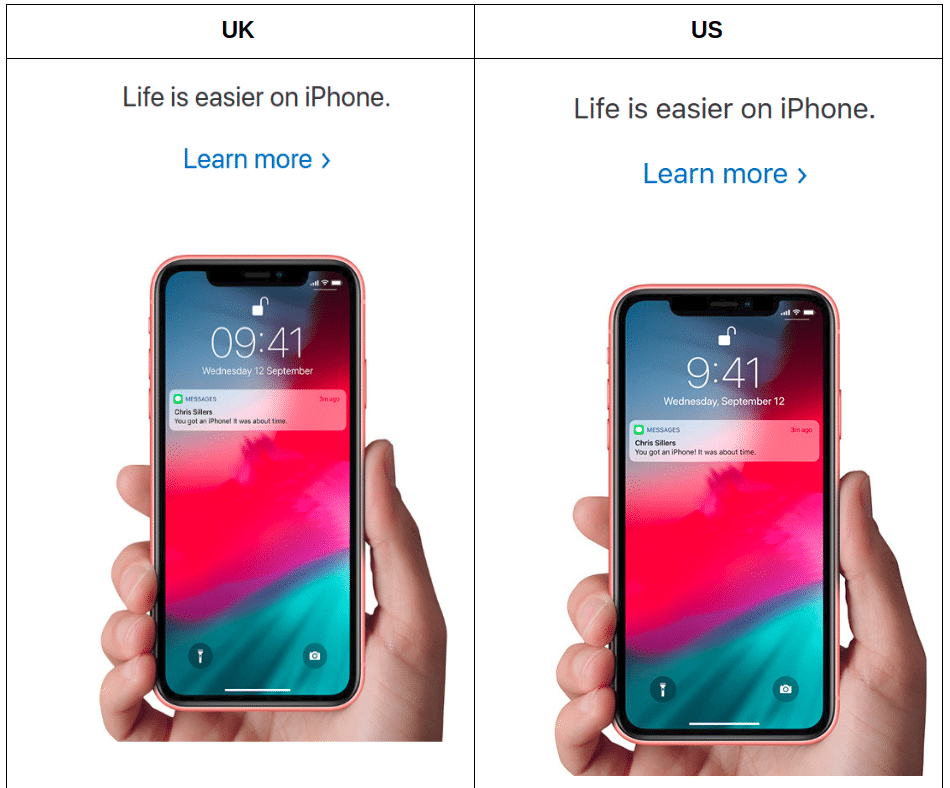
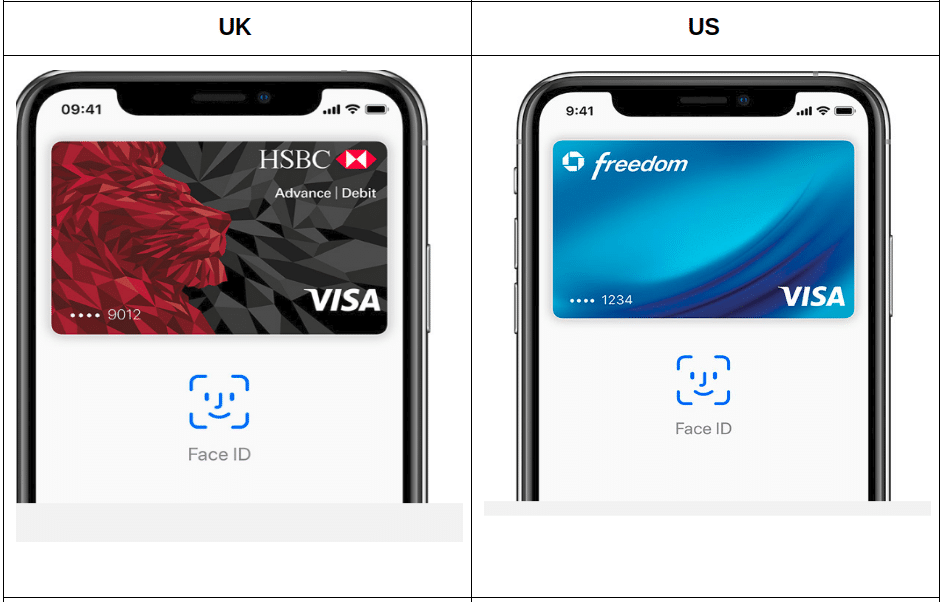
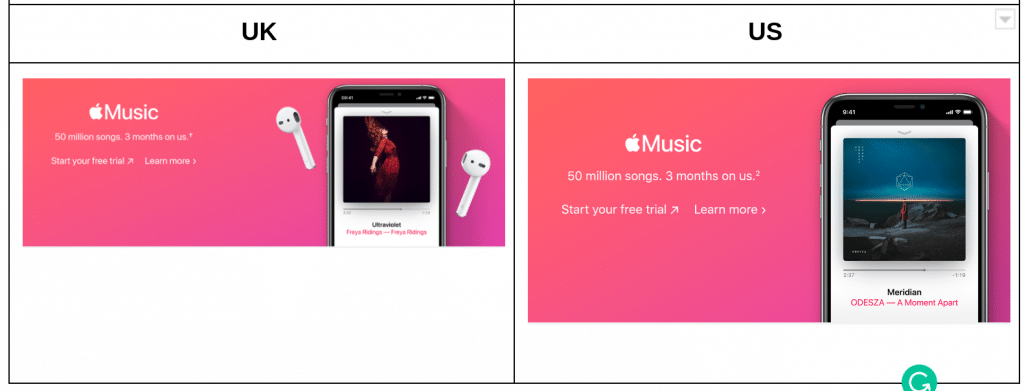
What you can learn from this:
- Date and time formats are different for the UK and for the U.S. versions. The U.S. DTG is MM:DD:YY. The U.S. common time mode 12 hours (AM/PM) rather than the 24 hours’ mode as in the UK.
- Images for credit cards represent different banking companies. Freedom is the U.S. consumer and commercial banking service of JPMorgan Chase & Co. Meanwhile, HSBC Holdings PLC is a British multinational banking and financial services company.
- Images representing artists are not the same. Freya Rose Ridings album shown on the UK website is an English singer-songwriter peaked at #9 on the UK Chart. Odesza displayed on the U.S. website is an American electronic music band originating from Bellingham, Washington.
As you can see, the date-time format may be specific even in the same language. Besides, different local specifics such as bank organizations may differ. Even minor images showing artists should be adapted to be closer to locals.
If you’re aiming at making your website look like you’ve developed it in the target market, the details are incredibly important.
Take the Nescafe’s example. The website look-and-feel for the U.S. version is simple and clear: the logo is static, a short sentence is used to represent the brand.
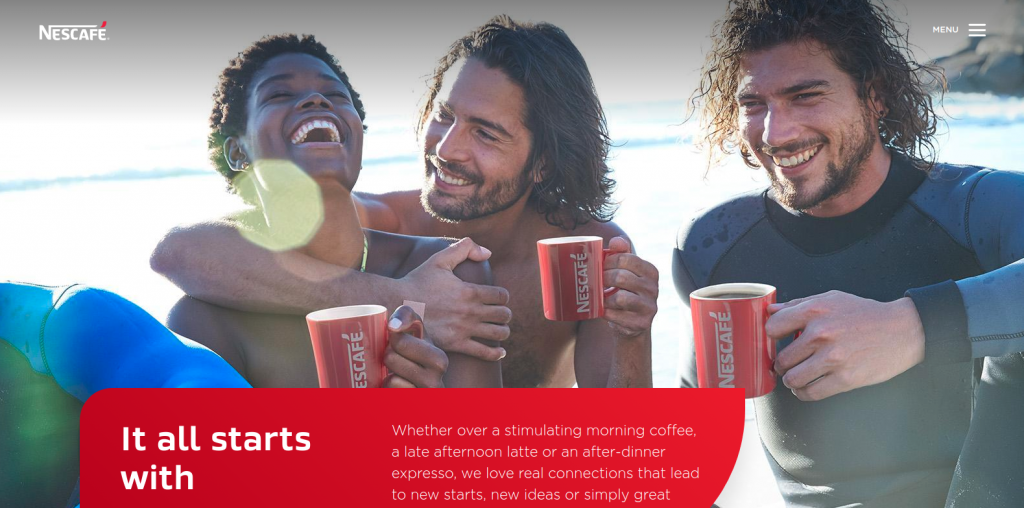
The same page on the Japanese version looks more cluttered with lots of options. That is the norm for Eastern culture.
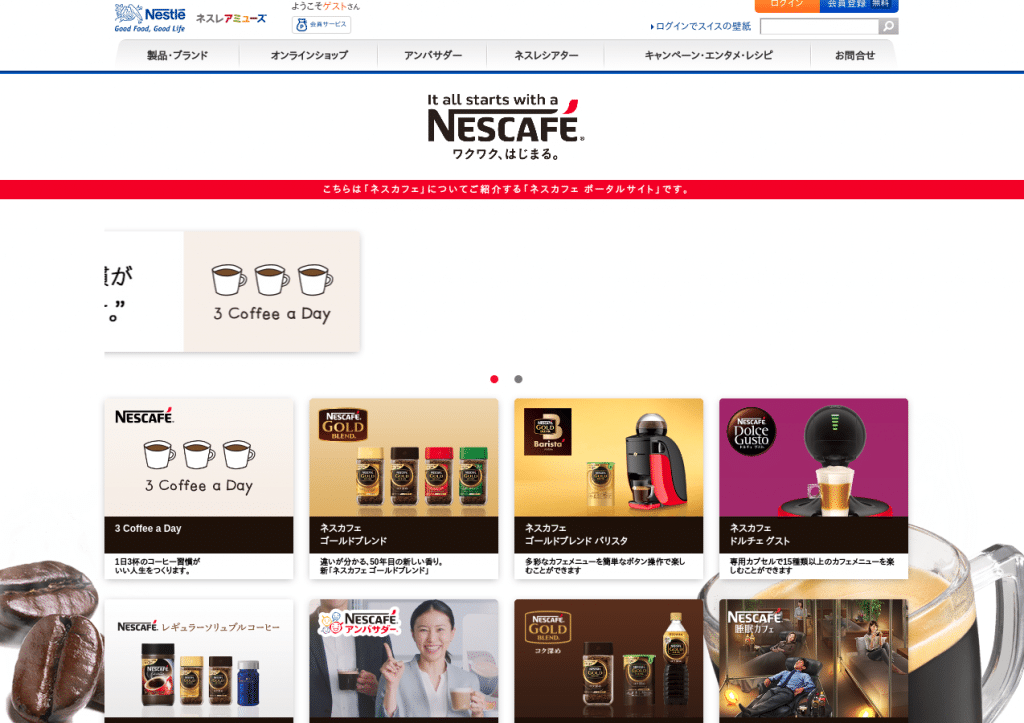
So, localizing in the U.S. use short intros and the minimalist design. Take the Airy Mobile theme as your inspiration!
Thus, when seeking for the U.S. localization, focus on simple design, use American English, 12 hours time mode, and month-date format. Additionally, consider applying local artists or upcoming events to be closer to your audience.
Social Life
One more thing you can take as your best practice is using YouTube links as Nescafe does. Video content is popular in the U.S. now. Statista mentions that in 2018, 96 percent of U.S. internet users aged from 18 to 24 years accessed YouTube. “The video platform has an audience reach of upwards of 90 percent among online users up to the age of 45 and still an impressive 51 percent penetration rate among those aged 75 years and above”. In this context, it would be rational to integrate YouTube extension to showcase your video content right from your eCommerce platform. Using YouTube links will boost the U.S. users’ engagement.
Currency and payment
Currency
United States Dollar (USD).
Payment and Delivery
Statista shows the following leading payment methods in the United States as of 2017:

The image shows that 29.5 percent of the U.S. citizens preferred to buy with their credit cards.
The following online payment services are quite common in the U.S. now:
- Stripe
- PayPal Payments Pro
- Amazon Payments
- Braintree
- Authorize.Net
- WePay
- BlueSnap
- SecurionPay
- Skrill
- PayU
- Zoho Checkout
- BitPay
- Payoneer
- CardinalCommerce
- Payza
- Dwolla
- PayPro Global
- PaySimple
- CoinGate Bitcoin Payment Processor
- WorldPay
Some of them are available in the CS-Cart by default like PayPal PayPal Adaptive, Advanced Express Checkout, Pro; Stripe Connect, and WorldPay. As for the rest, it can be easily connected via API to your CS-Cart platform.
Business Environment
Legal Norms
The US has numerous laws that address conducting business on the internet. These laws guide the use of personal information, intellectual property, business, and advertising in cyberspace. Some of the key laws are set out below:
- The Online Copyright Infringement Liability Limitation Act of the Digital Millennium Copyright Act of 1998 (DMCA).
- The Federal Trade Commission Act of 1914 (FTCA).
- The Gramm-Leach-Bliley Act of 1999 (GLBA).
- The Controlling the Assault of Non-Solicited Pornography and Marketing Act of 2003 (the CAN-SPAM Act).
- The Children’s Online Privacy Protection Act (COPPA).
- The Health Insurance Portability and Accountability Act (HIPAA).
- The Electronic Communications Privacy Act.
- The Restore Online Shopper’s Confidence Act (ROSCA).
- The Communications Decency Act.
- The Anti-Cybersquatting Consumer Protection Act of 1999 (ACPA).
- The Unlawful Internet Gambling Enforcement Act of 2006 (UIGEA).
- The Keeping the Internet Devoid of Sexual Predators Act of 2008.
- The Broadband Data Improvement Act of 2008 (BDIA).
- Article 2 of the Uniform Commercial Code (UCC).
- Prioritizing Resources and Organization for Intellectual Property Act of 2008.
- The Jumpstart Our Business Startups Act: Title III – Crowdfunding regulations.
In the United States, the Federal Trade Commission (FTC) is the primary agency that regulates eCommerce activities. This includes commercial email, online advertising and consumer privacy.
Another organization that eCommerce site owners should become familiar with is the PCI (Payment Card Industry) Security Standards Council. This organization provides security standards and regulations for handling and storing your customer’s financial data.
Navigating sales tax laws can be difficult. To ensure you are in compliance with tax laws, it’s always best to contact your state’s revenue agency to ensure you have the correct information on taxation before starting your eCommerce venture.
The United States Patent and Trademark Office (USPTO) is responsible for registering and enforcing your rights as a mark holder. They’re a resource you can access to gather information, ask questions, check the registry of current marks and begin the registration process.
Check the registry of existing marks to see if yours is unique. Trademarks are valuable assets, but it’s up to you to capitalize on and protect this aspect of your brand.
Best selling products
To succeed in the U.S. market, you should also be aware about what to sell. The Internet requests show the balayage popularity in the US including hair lighteners, color, application brushes and spatulas, toners and aftercare products.
The black diamond necklace is particularly sought-after in the US. Sure, back diamonds are not a mainstream product in terms of affordability, but if you can add a pretty ‘dock-off’ costume design, you could have a winner.
Take this link when targeting your products on Facebook in the U.S.
Closing
The U.S. market is not so easy as it might seem. While planning to enter the U.S. region, get consultancy with natives, especially concerning the laws. And the technical component of your eCommerce website is better to entrust to eCommerce developers experienced in customizing online shops for needs and environment of a particular market. Think about getting your own marketplace targeting the United States with the CS-Cart Multi-Vendor Plus platform providing a framework which can be seamlessly customized to naturally fit such a specific market.
